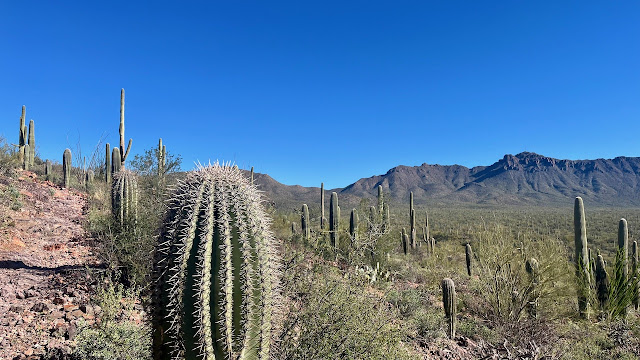This is a short hike—a little over four miles (hardly worth the 30-minute drive)—but quite scenic situated as it is in the Saguaro National Park West. So, lots of everyone's favorite cacti. And speaking of cacti, everything was quite verdant with the last few rains (see collage pic below). Quite rocky on the uphill start (I hiked the recommended counterclockwise direction) but not nearly so rough as the 13-mile Weaver's Needle Hike in the rocky Superstitions up north.
I think in the future, I will supplement this hike with a quick jaunt up the short, steep Tumamoc Hill I now regularly use as a training hike. I pass near by it on the way back to town. That would at least be a respectable 7 mile combo, and all doable in a couple of hours (sans drive time).
Beautiful clear skies today, weather at the trailhead over 50º to start, over 60º at hike's end on its way to a high of 73º.




.jpeg)












No comments:
Post a Comment